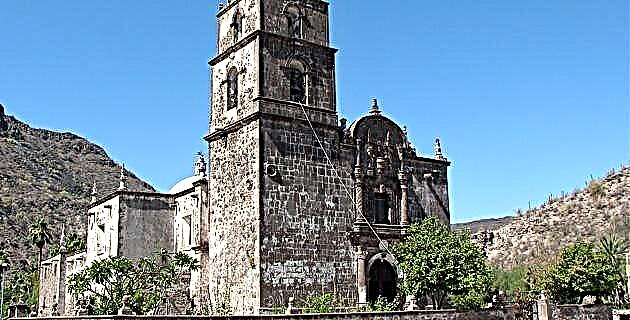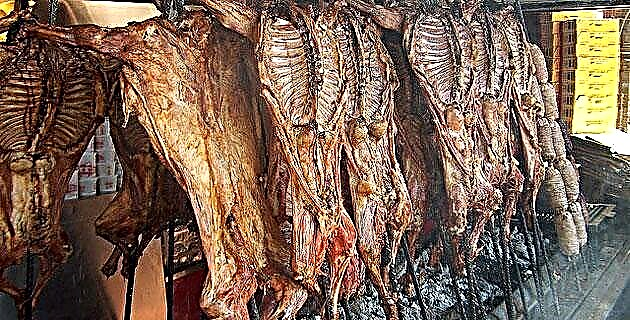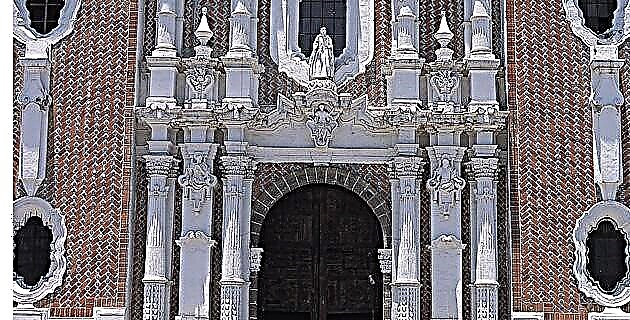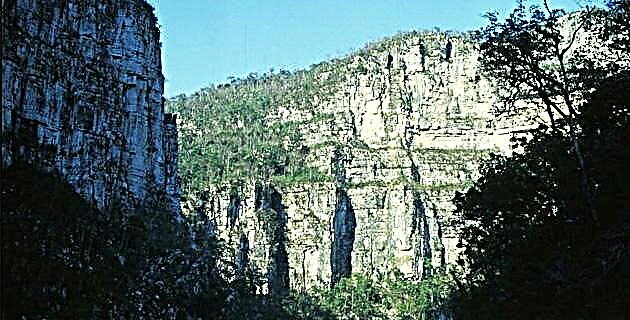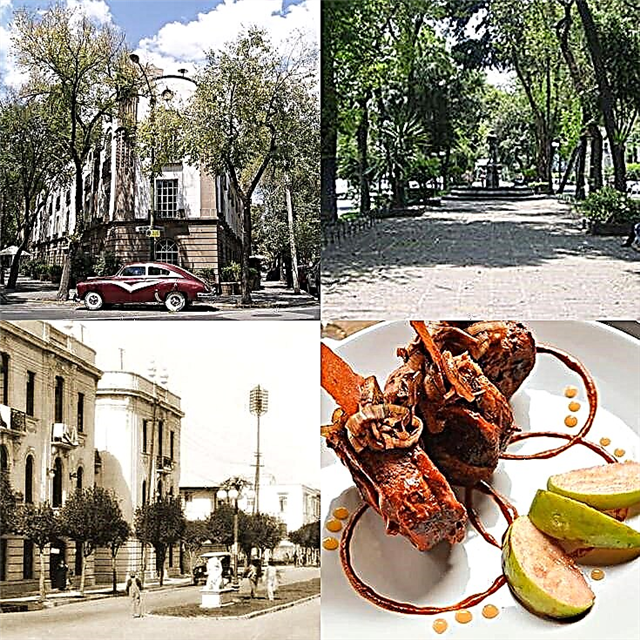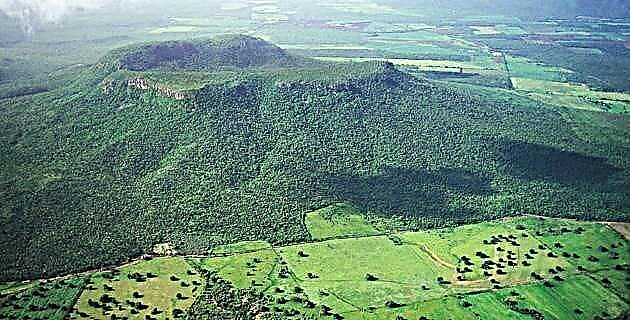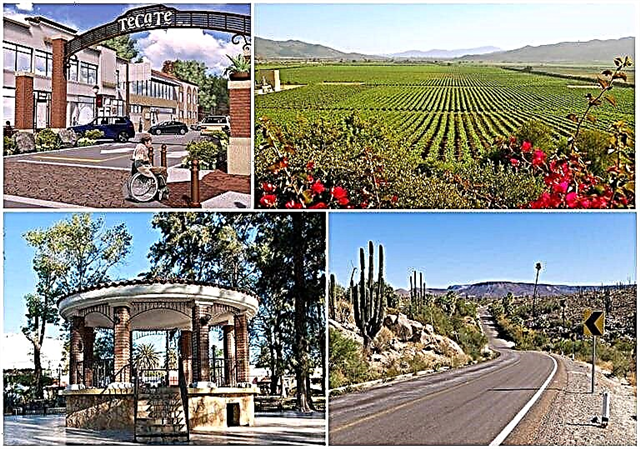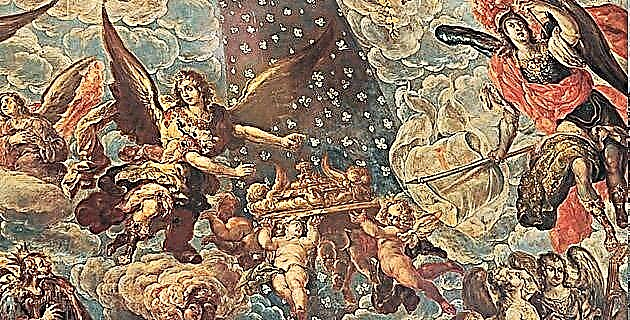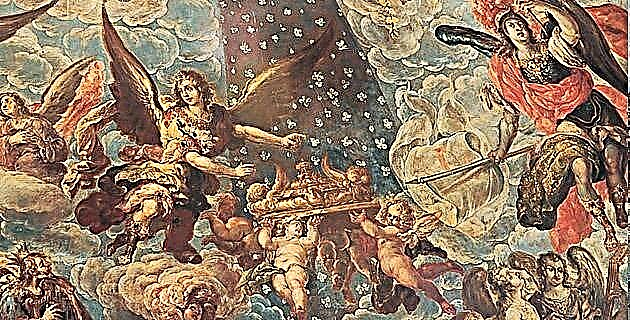
In Mexico, the phenomenon of death has brought a set of beliefs, rites and traditions.
Currently, and especially in rural and semi-urban regions, ceremonies for the Day of the Dead are still being held. Altars are made and adorned in homes and an offering is taken to graves in cemeteries.
With the non-peaceful advent of Western culture, ancient beliefs began to combine with the idea of a later life, a transmutation of the soul of the deceased that would await the day of the final judgment, while their mortal remains would remain in the tombs.
Hence the practice of burial in tombs, which is, in turn, a tradition that dates back to the time of the catacombs. This funerary tradition, which, at a certain moment, begins to be covered with artistic forms, will be treated in this essay.
Emergence of tomb art
In Mexico, the practice of burying the deceased in tombs was initially carried out inside and in the atriums of churches.
A very palpable sample of these burials can be seen today, profusely, on the sides of the main nave of the Cathedral of Mérida. There are, on the floor, a multitude of marble and onyx tombstones with the identification of the people buried there. This custom came to be considered insane, for which it was prohibited during the Juarista regime, giving rise to civil cemeteries.
In western culture and from the time of the catacombs, tombs have been conceived as places of transit where mortal remains wait patiently for the day of final judgment. That is why the tombs have been covered with various artistic forms (sculpture, epitaphs with various literary forms, painting, etc.) that carry a symbolism regarding the beliefs about the phenomenon of death and about the final destiny of the soul of the dead. deceased. This tomb art has evolved, since in somewhat "pagan" forms (broken columns and obelisks, trees - willows - and broken branches, cinerary urns, mourners, skulls) the profusion of angels and souls, crosses and emblems of redemption. The heyday of artistic and literary sculptural forms occurs in the cemeteries of Mexico from the middle of the last century to the first decades of the present, in our days there are only isolated cases, since burials have become standardized and impoverished in terms of plastic expressions. .
These representations have an aesthetic value, but they are also testimonial forms that refer us to the body of ideas and beliefs of the social groups that produced them.
The main artistic motifs with which the funerary art shown here is expressed is given, in sculptural terms, in terms of anthropomorphic figures (some of the most refined sculptural expressions in this genre are due to Italian sculptors, such as Ponzanelli, in the Pantheon Francés de La Piedad, from Mexico City and Biagi, in the Municipal Pantheon of Aguascalientes), of animals, plants and objects - within which are the architectural and allegorical figures -. In literary terms, the main forms are the “shrouds”, pieces that, as Jesús Franco Carrasco says in his work La Loza Funeraria de Puebla: “They are… loving canvases that surround the deceased”.
Anthropomorphic figures
One of the forms of representation of the deceased person is the portrait, which can assume a sculptural or photographic form when, attached to the tombstone or inside the burial chamber, is a photo of the deceased.
A sample of the sculptural representation in the Mérida pantheon is the sculpture of the child Gerardo de Jesús who, in front of an image of the Virgin Mary, holds a crucifix and some flowers on his chest, symbol of the infantile purity of the deceased's soul.
Representation of mourners
The figure of mourners is one of the most recurrent iconographic motifs during the 19th century.
The main objective of its elaboration is to represent the permanence of the relatives next to the last enclosure of their dead relatives, as a sign of affection and respect for their memory.
These figures acquire various nuances: from the female figures who prostrate, dejected, before the coffins (Josefa Suárez de Rivas tomb, 1902. Municipal Pantheon of Mérida), to those who appear kneeling, praying, with what is contributed to rest eternal soul of the deceased. A notable example, in sculptural terms, is the tomb of Álvaro Medina R. (1905, Mérida Municipal Pantheon). He is supposed to be dead, on his deathbed and covered by a shroud, while his wife appears, lifting a portion of the shroud over his face to say the last goodbye.
Representation of souls and angelic figures
The sculptural representation of souls can take on very successful plastic forms, as in the case of the Caturegli family tomb, in the La Piedad Pantheon, where a female figure seems to fly towards a cross. The figures of angels fulfill the function of helping the deceased in their transit to the afterlife. Such is the case of the figure of the psychopompos, conductor angel of the souls to paradise (Tomb of Manuel Arias-1893 and Ma. Del Carmen Luján de A.-1896-Chapel of the divine Master. Mérida, Yuc.).
A successful representation is the tomb of Mrs. Ma. De la Luz Obregón and Don Francisco de Paula Castañeda (1898). Both tombs are contiguous within the Municipal Pantheon of Guanajuato, Gto. In hers, to its side you can see the life-size sculpture of an angel pointing to the sky, while the tomb of Don Francisco shows the sculpture of a beautiful woman who remains leaning next to the cross, with a peaceful gaze directed to heaven. The remarkable sculptural set was made by the sculptor J. Capetta y Ca. de Guadalajara.
Allegorical figures, animals and plants
One of the most pathetic allegorical figures is the one that represents a gaunt skull with a pair of crossed quills. This macabre allegory to the mortal remains of the deceased, of a "pagan" order and one of the symbols par excellence of death, has a certain presence in the tombstones of the tombs of the old cemetery in Chilapa, Gro. Out of 172 tombstones (70% of the total) made in the 19th century, the skull appears in 11 of them, with dates ranging from 1864 to 1889. In the portico of the Municipal Pantheon of Guanajuato, in its frieze, there are also several skulls Similar.
The main motifs with animal shapes that I have recorded are the dove, which represents the soul of the deceased in flight towards the sky, and the lamb -associated with the figure of Christ the child, present "as a parable of the Good Shepherd" - (Ramírez, op .cit .: 198).
Vegetables assume various forms, among which it is worth highlighting that of trees, branches and stems — in the form of crowns or borders — and that of flowers, in the form of garlands, bouquets or alone. The representation of truncated trees is related to the Tree of Life and truncated lives.
Architectural elements and emblems
In addition to a certain type of classical ornamentation on the tombs, there are other architectural representations that refer to certain symbolism. The figuration of the door of the tomb as a door to the underworld or afterworld, as Puerta deI Hades (Ibid: 203), is found in the tomb of the child Humberto Losa T. (1920) of the Municipal Pantheon of Mérida and in the mausoleum of the Reyes Retana family, in the French Pantheon of Ia Piedad.
The broken columns refer to "the idea of an active life effort interrupted by death" (Ibid., Log. Cit.) (Tomb of Stenie Huguenin de Cravioto, Pachuca Municipal Pantheon, Hgo.), While in several cemeteries it can be found The representation of churches on the tombs (Mérida Municipal Pantheon), perhaps in remembrance of the role that these buildings played in the beginning of the burial practice in our country.
Regarding professional or group trophies and emblems, these types of symbols, allusive to the earthly activity of the deceased, in the Mérida cemetery an area reserved for members of the Masonic lodges can be seen.
Allegorical objects and shrouds
There are several iconographic elements that refer to symbols related to death, the fragility and volatility of life, the shortness of time, etc. Among them, it is worth mentioning the winged hourglasses (such as the portico of the old cemetery of Taxco), the scythes, the cinerary urns, the inverted torch. Some representations have a pleonastic character, since some tomb motifs are reproduced on the tombs.
The very portico of the Cemetery of the Cross, in the city of Aguascalientes, the work of the architect Refugio Reyes, is an eloquent example of the use of a metaphor for the end of existence: a large omega letter, which has signified the end of life. , (while the alpha letter means the beginning) carved in pink quarry, allows access to the cemetery.
The shroud, as a literary expression, has been treated in an extremely beautiful way by Jesús Franco Carrasco, who analyzes, in the aforementioned work, the characteristics and the meaning that such aesthetic manifestations acquired.
By a strange coincidence, the figure of the shroud motivated me to start an investigation into funerary art and it was the shroud that prompted Franco to start his own inquiry. The epitaph that I located is dated 1903, while the one in Toxtepec, Pue., To which Franco refers, is only 4 years later.
I transcribe the shroud of yore to conclude these lines:
Stop passenger!
Why do you go without talking to me?
Yes because I'm from land and you from meat
You speed up your step so lightly
Listen to me for a moment mate
The request I make is short and voluntary,
Pray to me an Our Father and a shroud
And continue your march… I'll wait for you here!
Source: Mexico in Time No. 13 June-July 1996


